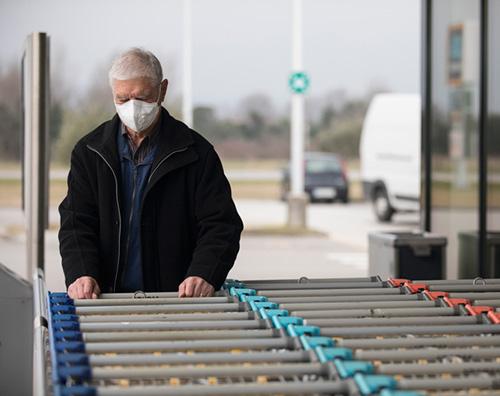By Dan Berthiaume
Source: chainstoreage.com, June 2020
According to the CEO of digital grocer Farmstead, changes to consumer behavior that occurred during COVID-19 will continue after the pandemic ends.
Chain Store Age recently spoke with Pradeep Elankumaran, co-founder and CEO of San Francisco-based Farmstead, about what he sees as permanent behavioral changes COVID-19 will cause in how consumers shop for groceries.
Farmstead’s order volume increased by five times within days of the March 17 San Francisco stay-at-home order, and order sizes instantly doubled. This has resulted in Farmstead staff picking, packing and delivering 10 times more items than usual, and thousands of people have signed up for the retailer’s waitlist.
Even after the pandemic subsides and retail enters a “new normal,” Elankumaran doesn’t think consumers will return to pre-COVID-19 levels of brick-and-mortar grocery shopping. Among other factors, he expects customer trauma from putting on masks and gloves to buy groceries will persist for a while, making shoppers cautious about going into stores even after restrictions ease.
Elankumaran expects one result to be continuing elevated demand for curbside pickup.
“Consumers will retain their interest in curbside pickup,” said Elankumaran. “They will also be trying out delivery. Adding capacity to existing stores is challenging, so grocery retailers should consider moving to dark stores that combine two to three stores of online demand, or moving to a warehouse altogether. To maximize their ability to fulfill online orders from stores, grocers should offer longer delivery windows, larger delivery radiuses, and better prediction on inventory.”
As customers who may have hesitated to shop for groceries online got to test it out during COVID-19 and realized it’s easier than going to the store, even once they are past anxieties caused by having to wear protective gear, Elankumaran said they will want to continue e-commerce. This is expected to apply to high-touch items such as produce.
“We suspect that the anxieties of customers around produce has shifted,” stated Elankumaran. “It’s a lot less appealing potentially to bring home produce that’s already been picked through by others during COVID-19 times.”
In addition, Elankumaran predicts customers will stay lists for their favorite on-demand grocery delivery services, as they have become accustomed to regular weekly deliveries.
“The advantages of a third-party delivery platform are that as a grocer, you don’t have to maintain a steady supply of drivers to meet potentially increasing demand,” he said. “The disadvantages are that they’re generally more expensive per order than a well-run delivery fleet.”
Elankumaran advises grocers evaluating third-party delivery platforms and apps to
primarily look for flexibility and cost-effectiveness.
“As more of the customers who were shopping in-store move online, third-party systems should be cost-effective for grocers, while dropping delivery and additional fees as close to zero as possible,” he said.

